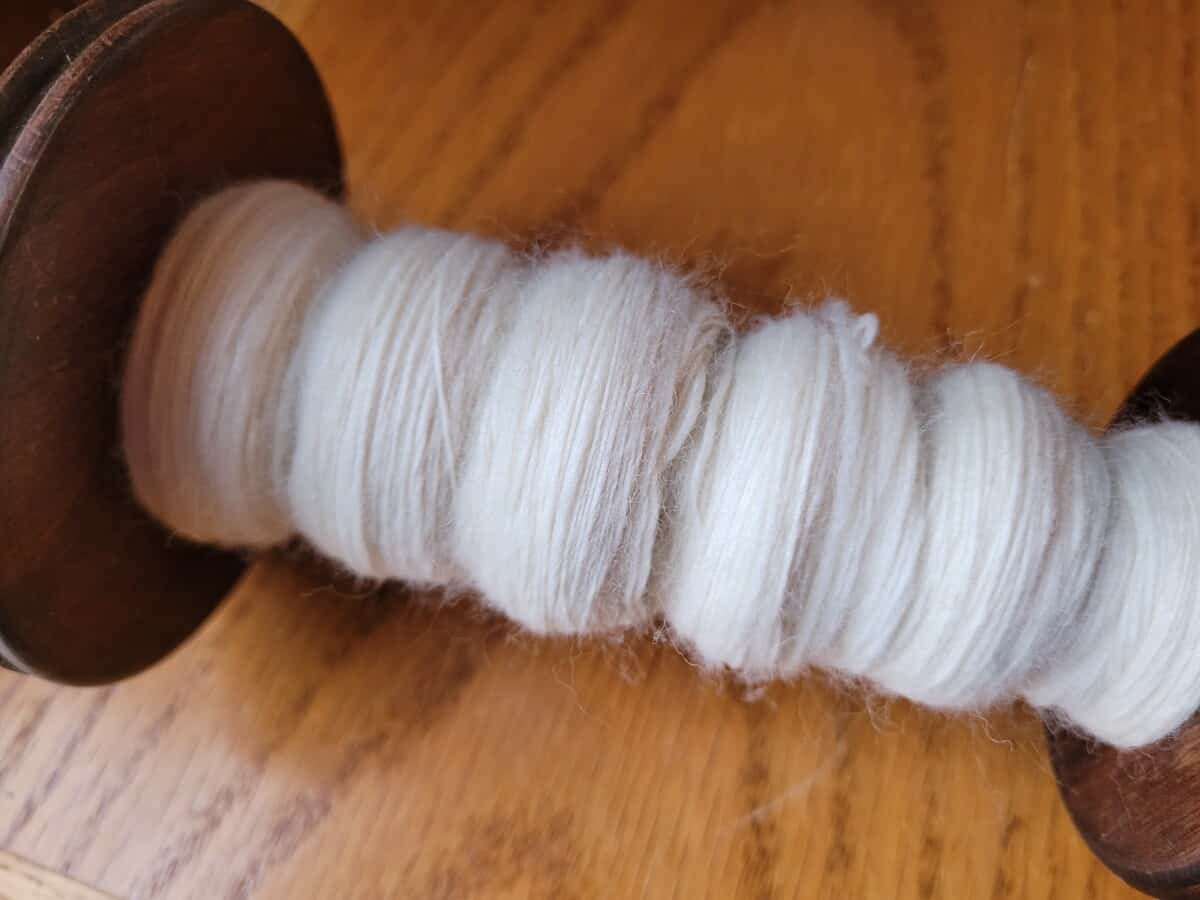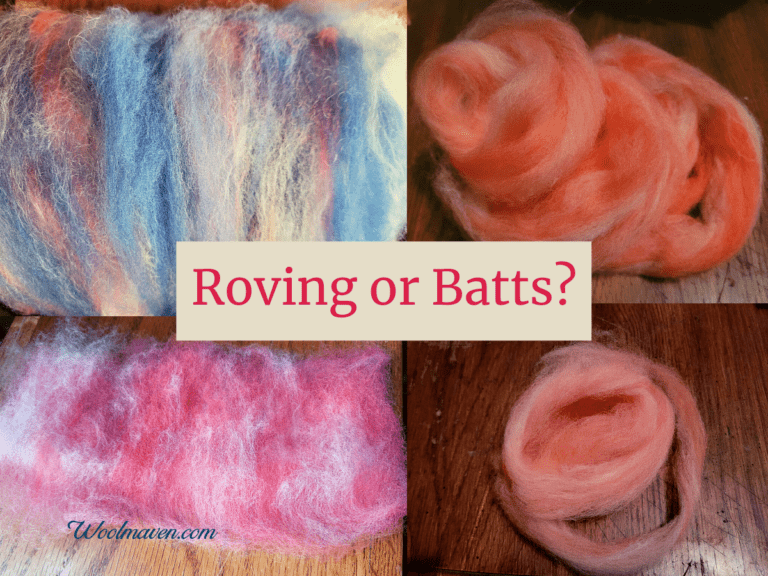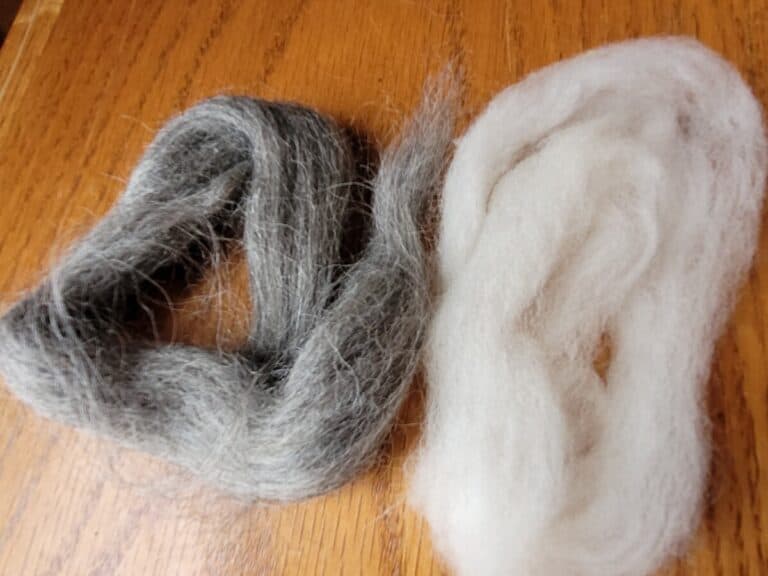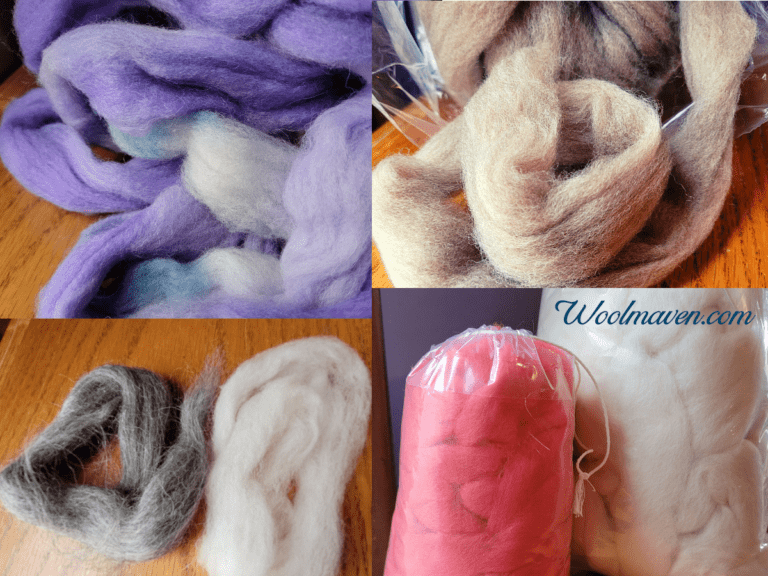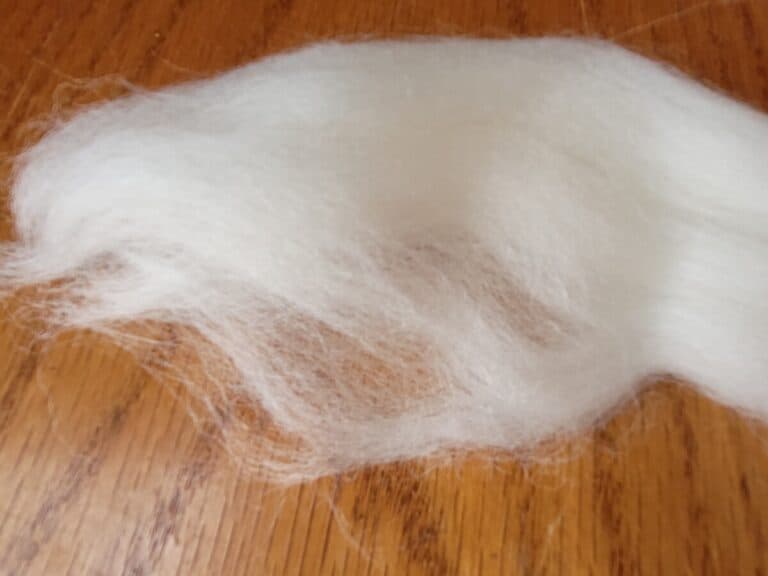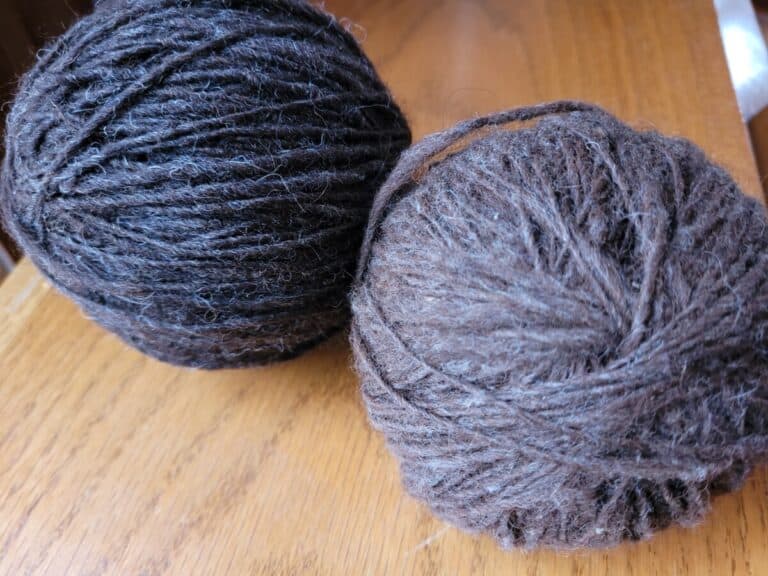Which Wool Is Best For Handspinners To Start With?
When you are looking around for fiber to start handspinning with, you’ll see a huge amount of choices!
Choices are wonderful, once you get some practice and know what you like, but for a beginner, too many choices is more confusing than anything else!
What is the best wool for handspinners to start with and why?
The best wool for handspinners to start with is Corriedale, specifically Corriedale combed top. Corriedale is a commonly available, versatile wool that has a mid range staple length and is easy to spin.
Is Spinning Your Own Yarn Worth It? goes over the math of buying vs spinning yarn, for both basic wool yarns and art yarns.
Want a list of beginner friendly wools? Here you go, these wools are all easy to use and easy to find, perfect for new spinners!
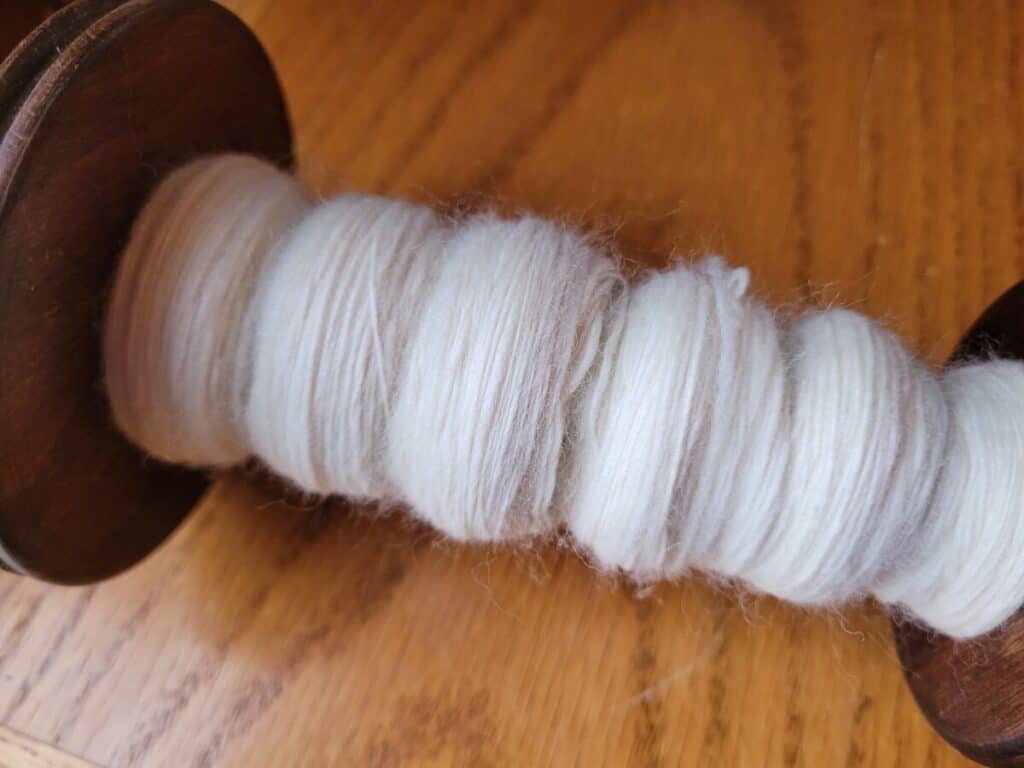
It’s a wonderful wool to work with, the only potential downsides to Falkland for a beginner are that it’s a bit more costly, so you would get more practice for your money from Corriedale rather than Falkland and it can be hard to find in stock. If you are fine with the price and see it in stock, get some, you’ll be glad you did!
This post contains affiliate links, which means I receive commissions if you choose to purchase through links I provide (at no extra cost to you).
The easiest wool to spin is Corriedale
The easiest wool to spin for beginners is Corriedale.
While there are other wools and wool blends that are also easy to spin, Corriedale is the easiest that I have found, so far.
I have been working with a lot of new to me wools specifically to see what is the easiest to work with and there are quite a few candidates on the easy end of wool, but, once again, none easier than Corriedale.
Corriedale has a very easy to work with staple length, has some grip (so it doesn’t slide right out of your hands) and is fine enough to make next to the skin type yarns. It’s a winner!
Wool that has a bit of grip makes your life easier, especially as a new spinner.
Once of the hardest things for me to figure out when I was first learning to spin was how to keep the wheel from ripping the wool right out of my hands.
Obviously, I had the tension too high, first off! Secondly, I was not able to hold onto the wool well and draft at the same time.
Having a wool with a bit of grip, so it kind of holds itself together and a mid range staple length will help with this situation.
Is Merino Hard To Spin? will give you some insight into spinning with this wonderful wool (spoiler alert: start with corriedale then work up to merino!)
Buy Corriedale combed top
The specific fiber you are looking for is Corriedale combed top.
You may see this wool listed as roving (a common misnomer) but read the description and make sure it is actually combed top, not true roving. You want combed top.
Corriedale combed top is very easy to find and should be at most any fiber supply shop you find.
If you are looking for the best deal, get the Corriedale top, which is undyed, so it will be white.
If you need a bit of color, or maybe want some color to spice up your spinning practice and are willing to pay a bit more per ounce, go with the Corriedale dyed top.
There are usually a ton of color choices in the dyed 4 ounce bumps. Some shops do have 1 and 2 ounce bumps, as well, with the available sizes listed in the description.
If you just want the best deal, go with the white, it’s considerably less expensive per ounce.
If you need a bit of color and enjoy naturally colored wool, consider a naturally striped top, which is part white and part naturally colored brown Corriedale top.
This striped top is also called a humbug and is normally around the same price, maybe even a bit less, as the white.
I can actually see the striped top as having an additional bonus to you as a new spinner in that you could see the twist more easily in the contrasting colors.
Want a list, so it’s simple to know what you need? Here it is, four easy to use wools that are great for beginners!
Alternative beginner friendly wools to use
If you can not find Corriedale (which would be a real shocker, since it is so popular), consider using:
- Romney
- Cheviot
- Blue Faced Leicester (BFL)
These breed wools are not quite as beginner friendly, in my experience, as Corriedale, for differing reasons, usually price or availability.
If you really feel called to start with one of these other three breeds, go for it! It’s better to get going than endlessly consider something, get started!
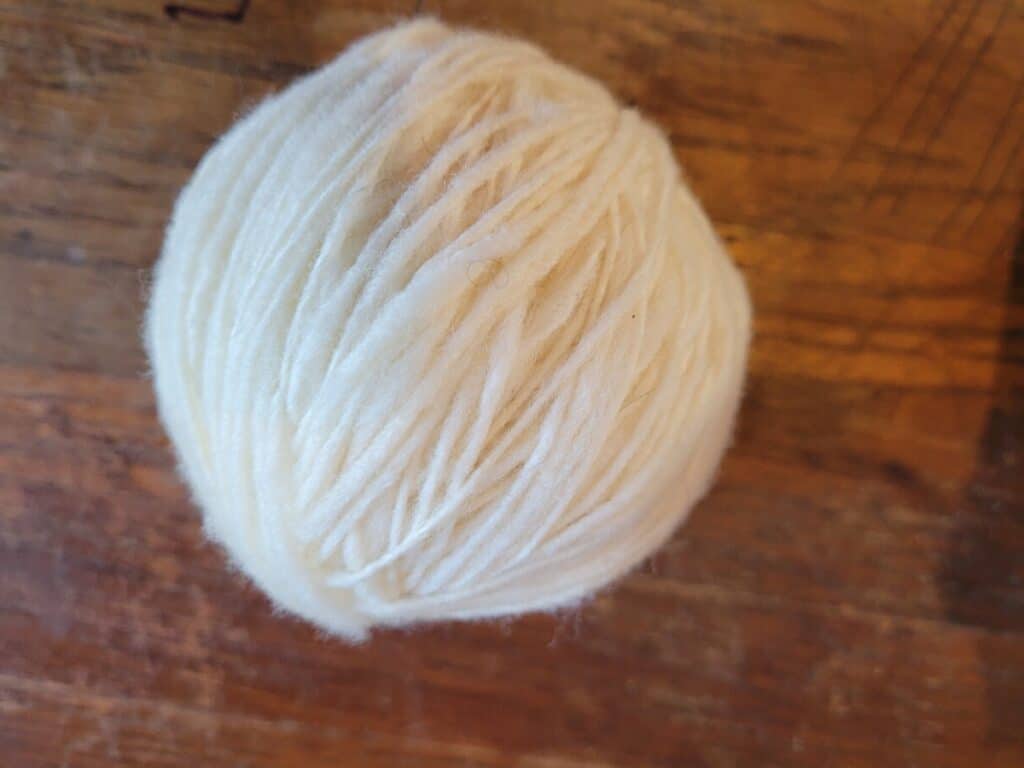
Romney is beginner friendly, too
Romney is a close second, to Corriedale, as far as being a very beginner friendly wool. It is easy to work with, has a nice staple length and has some grip.
The only reason I put Romney as second is due to it occasionally being a bit harder to find, depending upon where you decide to shop.
If you can easily get Romney or Corriedale, the choice is yours, you’ll be happy with either.
The only real difference bewteen them is that Corriedale is a finer fiber, meaning it will feel softer to you in the finished yarn when compared to the Romney.
If you decide to go with Romney, you should know that there are two types of Romney wool available, New Zealand Romney and Kent Romney.
The Kent Romney has a shorter staple length and will make a softer feeling yarn, more of a next to the skin type yarn.
The New Zealand Romney is usually listed as just Romney will be a bit of a longer staple, but also a higher micron, meaning it is not next to the skin soft.
Neither is better than the other, it’s a trade off between staple length and micron count, so pick the one that suits you better!
Looking for a great resource on which fiber to pick and how best to use it? Consider getting The Fleece And Fiber Sourcebook, filled with wonderful pictures and details on just about any wool you can find.
Bargain wools may have a short staple
There are a few bargain wools out there, and, I have to admit, the price per ounce is stellar! Sounds great, so far, right?
Yes, but the real question is are they the best place for you to start? I don’t think so and here’s why.
The bargain deals seem to have a shorter staple length, going under 3 inches, for a beginner, that’s getting pretty short.
Dropping down below 3 inches of staple length really seems to make spinning more difficult, not something you need if you are learning!
I’m not sure what’s so magic about 3 inches of staple length, (for me, it’s more like 3.25 as a workable minimum) but there is definitely something to it!
If you want to just get a lot of spinning in on lower cost fiber (a good idea, actually, since your first few yarns will not be the greatest), get both Corriedale and the bargain bag of wool.
Use the Corriedale first then work with the bargain wool to get more time on the wheel. It will take some practice and you might as well practice on the least cost wool!
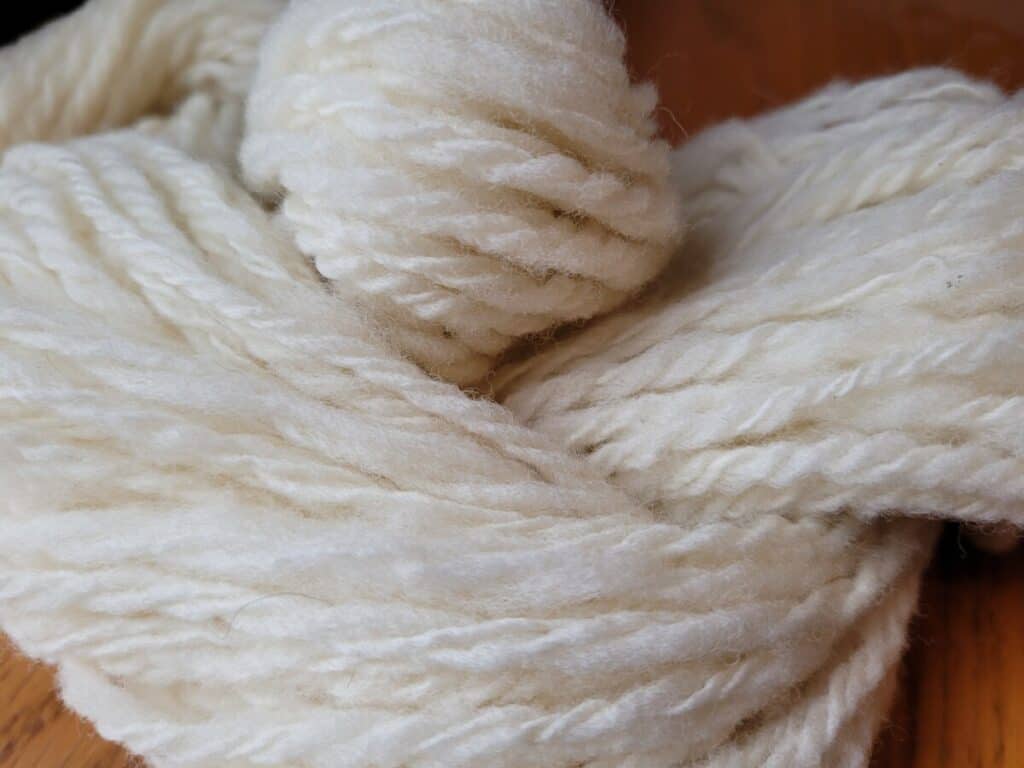
While Rambouillet is soft and pretty easy to find (this fiber is from a small shop on Etsy), it’s probably too short of a staple length for your first few projects. Keep Rambouillet in mind for when you are a bit more comfortable with your wheel and want to do more work with fine wool. Don’t worry, you’ll get there!
For a spindle use Blue Faced Leicester (BFL)
If you are starting off with a spindle, heavily consider using Blue Faced Leicester (pronounced less-ter) combed top for your first choice of wools.
Normally, I am a diehard Corriedale supporter, it’s just so easy to work with, but for the spindle I found that BFL is a better choice than Corriedale.
The BFL has more slip, needed to more easily draft the fiber as you are “dropping” and a bit longer of a staple length, making it more forgiving for the new spindle user.
I started with Corriedale on the spindle and was having a hard time drafting it out. I am new to spindles and found using it to be very awkward at first.
No surprise since it’s a new skill, but the awkwardness was more than I anticipated since I already know how to spin on a wheel.
Then, I started to “get it” but still was having drafting issues until I switched to BFL and that made a world of difference for me. BFL has more of the slip I needed.
I’m still not great at spinning on a spindle, and, to be honest with you, I’m not really a spindle fan, I’d much rather use the wheel.
Even so, I did notice a noticeable and immediate improvement with the spindle when I switched from using Corriedale to working with the BFL instead.
Consider shopping at The Woolery
I find that the best prices, on a per ounce basis, are at The Woolery (link to protein fibers page).
The catch is they do not have too many smaller packages, it’s normally 250 grams (8.8 ounces) for most undyed wool.
If you want to order smaller amounts, you’ll find them in the dyed or specialty wools, but not so much in the basic combed top selection.
I just received an order from them last week, it came pretty quickly and was exactly as I ordered. I’ll definitely order from The Woolery again.
The Joy of Handspinning has a nice overview of types of wool to spin and each type’s main characteristics, if you’d like another source for reliable information.
Need a specific list of what spinning fibers to get? Here you go, just click the link below!

